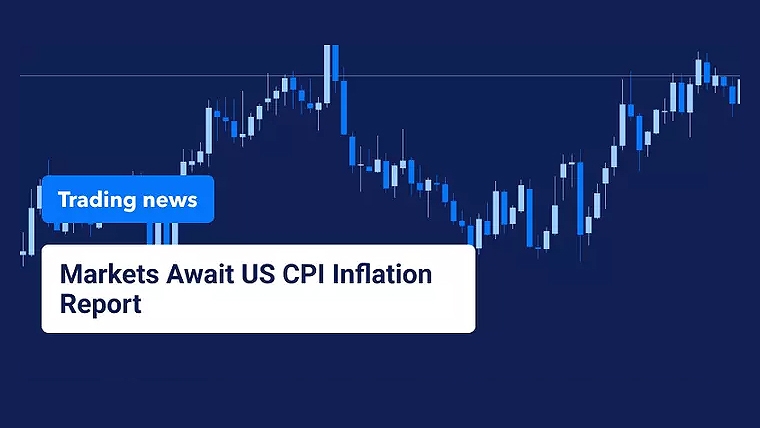
By Stuart Talman, XE currency strategist

A tentative start to the week has delivered tight range bound trade as market participants await a huge week of central bank decisions and key macroeconomic data, the two major events being this evening's November CPI report for the US economy followed by Thursday morning's FOMC meeting.
It's tough to judge which is more important without knowing the outcome.
CPI numbers that deviate from consensus projections will cause significant volatility.
Given energy prices are down around 8% over the past 6 weeks, headline inflation is expected to remain flat through November, causing the annualised rate to fall from 3.2% to 3.1%. Stripping out volatile food and energy prices, core inflation is projected to climb +0.3%, month-on-month (MoM), yielding an unchanged year-on-year reading of 4.0%.
Predicting outcomes in simple terms, should MoM core CPI print closer to +0.2% than +0.3%, the risk rally will continue as the narrative the Fed will pivot to monetary easing, perhaps as early as March, dominates other views. Via this soft CPI scenario, US equity markets will take flight, the S&P500 and Nasdaq further advancing to re-test all-time record highs. Both indices are between 4% - 5% away from their respective zeniths.
The New Zealand dollar and other pro-cyclical currencies would outperform on the disinflation trade, NZDUSD resuming its rally of the past 6-weeks to climb beyond the 04 December swing high, located a few pips above 0.6220.
A CPI beat - MoM core nearer +0.4%, would induce the market to pare back Fed rate cut expectations for 2024, which depending on what market you reference (Fed funds futures, swaps or SOFR futures) currently calls for 110 bps - 120 bps of easing through next year. Via the CME's Fedwatch tool, the implied probability of a quarter point hike at the 20 March FOMC meeting is currently just below 40%.
Core inflation running above the consensus for November would see the odds of a March cut plummet, and likely, at least, a full cut stripped out of the projected 2024 easing path.
Via this outcome, the three major US equity markets head south as US treasury yields and the dollar spike higher……the Kiwi plunging back below the widely monitored 200-day moving average, likely setting up a re-test of old support, located near 0.6050.
An inline CPI report then positions the FOMC meeting as the week's most impactful event.
Jerome Powell and his FOMC colleagues will elect to deliver a fifth consecutive on-hold decision, maintaining a 5.25% - 5.50% target rate.
Given the universally expected no-change, the focus will be on the accompanying statement and more importantly, the summary of economic projections (SEPs).

On September 20, the last time the SEPs were released, the FOMC's median projection called for a 2023-end Fed funds rate of 5.6%, a 2024-end rate of 5.1% and a 2025-end rate of 3.9%.
Following the notable cooling in economic activity and further progress in lowering inflation, the final rate hike projected in the last SEPs, aka dot-plots, failed to materialise.
The consensus outcome is for the dot-plots to continue to project two rate cuts by the end of next year, leaving the year-end median dot plot 25bps lower (~5.35%) than the September dot plot.
If the dot plots call for less cuts in 2024 and 2025 (5 x quarter point cuts), market pricing may shift to more closely align with FOMC projections: treasury yields would climb, the dollar strengthens.
Meeting expectations via dot plots and Powell maintaining similar messaging
(not thinking about cuts; higher for longer) and tone during his presser - expect risk assets to head higher as the soft landing/no landing narrative prevails.
What are the key NZDUSD levels we're monitoring this week?
Support has appeared in the low 0.6100's over the past two trading days. The 23.6% Fibonacci retracement of the late October to early December ascent is located at 0.6117 whilst the 200-day moving average currently resides near 0.6090.
Therefore, the key support zone to monitor is 0.6090 to 0.6120.
A decisive downside break then opens a path to test 0.6050 - previously a major resistance level.
NZD selling, likely catalysed by the mix of a hot CPI, hawkish on-hold decision, could see the pair retreat to the 100-day moving average, currently located at 0.5980.
On the topside, the 61.8% Fibonacci retracement of the mid-July to late-October sell-off is located at 0.6168. Last week, following the retreat from territory north of 62 US cents, advances were stymied between 0.6170 and 0.6190 on three occasions.
Therefore, the key NZDUSD resistance zone to monitor is 0.6170/90.
Of course, despite the week being littered with potential volatility inducing events, in-line data prints and the absence of any surprises from the Fed could see the landmines defused, markets continuing to trade within prevailing ranges, before one final leg higher into year-end.
Commencing the new week near 0.6110, the Kiwi mostly ranged between 0.6105 and 0.6130 through Monday - mind numbing stuff.
In addition to US CPI, the economic calendar presents UK jobs data and a speech from RBA Governor, Michelle Bullock. Given Bullock is speaking at the AusPayNet Summit, delivering a speech titled Modernising Australia's Payments System, we’re not likely to receive market moving comments.
Will annualised core inflation in the US dip back below 4% for the first time since May 2021?
The answer will be pivotal to near term direction.
Stuart Talman is Director of Sales at XE. You can contact him here.

We welcome your comments below. If you are not already registered, please register to comment.
Remember we welcome robust, respectful and insightful debate. We don't welcome abusive or defamatory comments and will de-register those repeatedly making such comments. Our current comment policy is here.